When braking on ice, the brake pedal hits. Why does the brake pedal hit when braking? Getting rid of an annoying problem
The braking system is one of the main mechanisms in a car, responsible for reducing speed and stopping the vehicle. If a car does not go anywhere with a faulty engine, then if there is a problem with the brakes, movement becomes dangerous not only for the driver and passengers, but also for other road users. In this article we will look at the possible reasons for the brakes beating, which indicates some kind of malfunction.
The brake pedal hits when braking - these are extraneous vibrations going to the pedal at the moment of braking. There is a directly proportional relationship between pedal pushes and speed, that is, the higher the speed, the more intense the “response” to the pedal will be. If the speed is over one hundred kilometers per hour, with heavy braking, vibrations can also transfer to the steering wheel and car body.
Why does the brake pedal hit when braking?
Why does the brake pedal squeal when you press the brake? Most often, when various malfunctions are detected, motorists turn to a specialized service.
At the station, the mechanics will most likely order the front brake discs and pads to be replaced, since they are changed together.Yes, this is a common cause of “impacts” on the steering wheel or brake pedal, but there are still other malfunctions that give such a result. Let's consider what main malfunctions can cause such behavior of the car when the speed decreases.
- The first reason, which we have already described above, is deformation of the brake disc. Most often this happens due to severe overheating. The average operating temperature of a modern brake disc is 200-300 degrees. Overheated soft metal is prone to deformation, which causes irregularities to appear on the surface of the disk, which cause shocks. This problem can be solved by replacing the disks. If your driving style is quite aggressive, then you should consider purchasing brake discs that are more temperature-resistant. The ventilation of the disks, as well as their area, is responsible for heat resistance; the larger it is, the better the heat transfer.
- Wear of brake discs. With severe and uneven wear, scuffing may appear on the braking surface of the “pancake”, which will cause runout. Just a replacement solution. If the discs on one axle have uneven wear, it means that the braking of the right and left wheels occurs unevenly, which can also complicate driving and become a threat to life.
- Overheating of Ferodo spray on the pads. When the brake surface of the pads overheats, the friction linings simply begin to crumble, which is why they cannot properly and evenly press the brake disc and stop the wheel.
- Uneven or severe pad wear. Just like the surface of the disc, the braking surface of ferodo pads wears out over time. Wear may occur unevenly, which will affect the wear of the disc and the process of stopping the rotation of the wheel. Everything can be solved with a simple replacement. If the brake discs still have a sufficient layer of working surface and there are no defects, then you can only get by by replacing the pads as a pair on the axle. When installing new pads, be sure to clean the bracket, otherwise this may lead to the pad becoming sour over time. The pad must have free play in the bracket so that the caliper correctly presses its entire surface against the brake disc.
- Inoperative brake caliper cylinders. Another common problem is stuck pistons. This often happens due to torn boots of the brake pistons; because of this, dirt and moisture get into the brake cylinder, which “kills” the lubrication of the mechanism, which over time leads to souring and inoperability of the entire device. A caliper repair kit will help solve this problem. The kit will include a new boot, brake piston and lubricant. Everything is simple, you just need to “squeeze” the old piston out of the cylinder by pressing the brake pedal, then we clean everything, lubricate the cylinder walls, the piston and press it back, and install a new boot.
- Worn rear brake pads. It is often only noticed during heavy braking. Usually, in moderate driving mode, only the front mechanisms are involved in the braking process, the rear ones are connected either later or during sharp braking. So if the beating does not occur with pressing the pedal, but later or towards the end, then this is most likely due to worn rear brake pads.
- Rear brake drums are worn or bent. When braking, the drum presses the pad unevenly or inconsistently, so there is no full contact between the pad and the braking surface, braking efficiency decreases and vibration is transmitted to the pedal or body. The reason for wear of these parts is most often their age, and the solution to this issue is simple - replacing worn out consumables with new ones.
- Severe wear on wheel bearings. Due to play and wear of the bearing working surface, vibration and hum are transmitted to the wheel. When braking, the front suspension of the car is loaded, which creates vibration from the bearing. It is possible to check bearing wear on a lift by checking the wheel for vertical play; if there is any, then the bearing has already “outlived” its usefulness and needs to be replaced.
- Incorrect wheel balancing. It rarely makes itself felt through the brake pedal; more often it hits the steering wheel. You can solve the problem by contacting a tire service. By properly balancing the wheels, the vibration will go away.
- The last problem may be that the nuts and bolts are not fully tightened. This is the reason for insufficient fixation of mechanisms, the appearance of backlash, which instantly causes vibration. In addition to the fact that this can also lead to early wear on parts, it will also affect the safety of the vehicle.
Video: why does the brake pedal and steering wheel hit when braking?
Summing up
The vibration of the brake pedal when braking is one of the symptoms of a malfunctioning brake system. The consequences can be very different from simple wear of parts to the creation of emergency situations due to brake failure.
For full operation of the brake system, full contact between the surface of the friction lining of the pad and the brake disc is necessary. If replacing worn parts helped only temporarily, maybe you should think about changing your driving style, because it is your driving style that affects the service life of the parts.
Also, you should not allow the temperature of heated elements (discs and calipers) to change; try to avoid puddles after braking, and also allow the brakes to cool before washing the car. To avoid breakdowns, you should contact the station more often maintenance to check the performance and preventive maintenance of brake mechanisms, repair them in a timely manner, and also periodically inspect your brakes yourself.
You can test and find any faults in the brake system in your car on an empty section of the road, away from houses and pedestrians in order to avoid accidents.
First of all, you should carefully monitor the car’s braking process, listen to see if there are any extraneous noises or squeaks, whether the braking is uniform, or whether the direction of movement changes during sudden braking.
The braking system of a modern car is its essential element and the safety of operation of the vehicle directly depends on how well it works. Despite all its reliability, this unit is susceptible to various breakdowns and malfunctions, including pedal vibration when braking - a rather serious problem from which no one is immune.
As a rule, the intensity of the beat increases in direct proportion to the increase in the speed of the car, and when it reaches approximately 130 km/h, it is felt not only in the pedal, but is also transmitted to the steering column and even the body. In such a situation, you should not hesitate; you need to immediately carry out diagnostics, identify the problem and outline ways to solve it. Let's consider these points in more detail.
The main reasons for the brake pedal beating
Analyzing the reasons that can cause the brake pedal to beat, it is worth noting that they can be conditionally divided into direct, directly related to the braking system, and indirect, related to malfunctions of the suspension system, human factor and other similar manifestations.
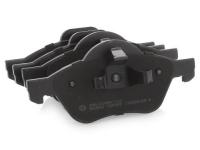 So, among the main reasons it is worth highlighting the following:
So, among the main reasons it is worth highlighting the following:
- Warped brake discs are one of the most common problems. It usually occurs under the influence of a large number of heating/cooling cycles, causing deformation;
- Brake pad malfunctions are a problem that also occurs quite often and, as a rule, develops under the influence of long-term use;
- Rear brake drum - wear or distortion of this unit causes significant vibration in the brake pedal;
- Rear brake pads - here the root cause of the malfunction can be a number of destructive factors, including wear, crumbling and sticking of the drums;
- Brake cylinders, both front and rear, are a rather unpleasant situation in which acidification occurs and, as a result, the operating parameters of the elements deteriorate.
However, quite often, even correcting all of the above problems is not a guarantee of restoring system functionality. Here, as a rule, we are talking more about indirect factors that are not directly related to the system, but affect its operation.
Indirect factors causing the brake pedal to pound
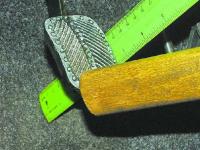 When considering indirect reasons, you should focus on the following:
When considering indirect reasons, you should focus on the following:
- Achieving a critical level of wear of wheel bearings;
- Damage or significant wear of the front wheel levers (“saber” and “daisy”);
- Problems with . Here it is really worth noting that in such a case the body hits more;
- Weak tightening of fasteners (nuts and bolts), which leads to play in the vehicle components, especially noticeable at medium and high speeds.
If there are problems with the brake system, the following solutions are possible:
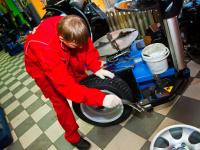
Instead of a conclusion
The main reasons for the brake pedal beating and options for solving the problem are considered. It should be especially noted that at the slightest suspicion of such a malfunction, it is necessary to immediately carry out a thorough diagnosis and eliminate the malfunction. There is no need to waste time - delay can be very expensive.
We will discuss and eliminate the causes of brake pedal vibration. Let's talk about why Brake pedal pulsates when braking What are the direct and indirect causes of the breakdown?
Did you know? An electric brake drive is used on hybrid cars as an auxiliary means for regenerative braking - instead of wasting energy on braking, the reverse process takes place by removing energy from the wheels into the battery, thereby slowing down the car.
The main causes of brake runout
Let's look at the main causes of shaking and beating of the brake pedals, which directly or indirectly affect the brake pedal.
Important! The higher the speed, the harder the brake pedal hits, so if a breakdown is detected, you should not accelerate the car so as not to get into an accident.
Direct reasons
Direct causes are parts of the car that are directly connected to the brake pedal. Let's take a closer look.
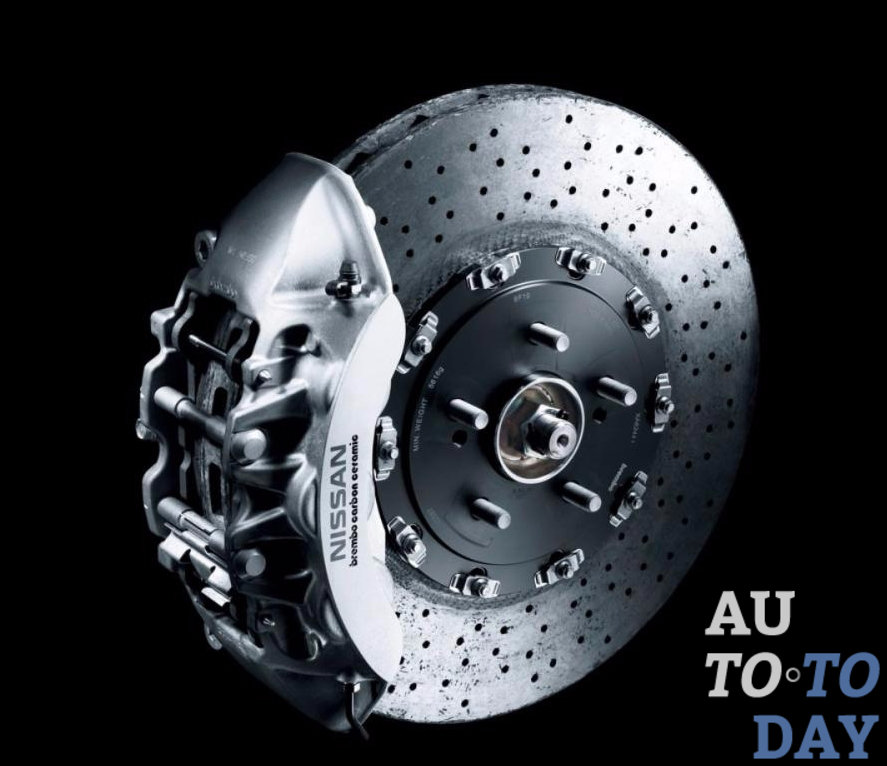 Many car owners eliminate possible problems which are described above. But the problem still remains. The reason may even lie in the replacement of some elements. It all depends on the quality of the parts: pads, brake discs, etc. It also depends on the technician who installed them on your car.
Many car owners eliminate possible problems which are described above. But the problem still remains. The reason may even lie in the replacement of some elements. It all depends on the quality of the parts: pads, brake discs, etc. It also depends on the technician who installed them on your car. Thus, we have considered most of the problems that are directly related to brake vibration when braking. However, the fact is that in addition to direct reasons, there are also indirect ones, which are more difficult to identify.
Indirect reasons
Indirect causes are breakdowns or malfunctions that are not directly related to the braking system. Let's take a closer look.
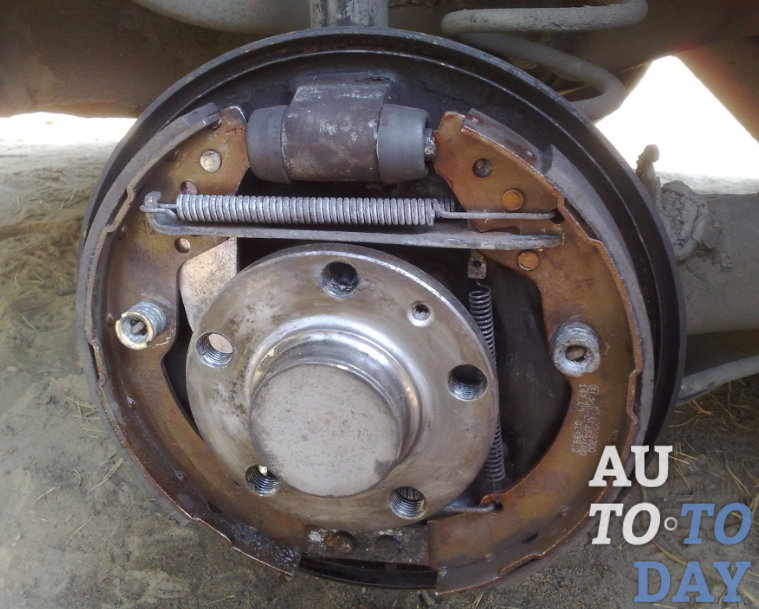 Indirect problems are difficult to identify on your own, so after checking the entire braking system, you should contact a service center.
Indirect problems are difficult to identify on your own, so after checking the entire braking system, you should contact a service center. Important! To avoid problems with brakes, you need to top up brake fluid on time and regularly diagnose the car's braking system.
How to fix the problem
If you find a part that causes the brake pedal to jerk when braking, then it is worth analyzing the degree of wear. If the part is severely damaged, only replacement will help.
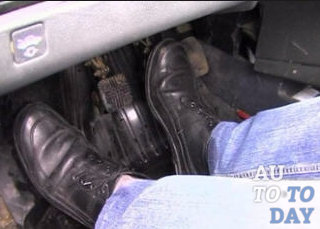 Only “souring” of the brake cylinders is safe to “treat.” WD-40 is used for this. If this remedy does not help, then a replacement is needed. You shouldn’t “patch” parts that are barely working several times, because when braking, even at average speed, the faulty part will simply fall apart and cause much more waste.
Only “souring” of the brake cylinders is safe to “treat.” WD-40 is used for this. If this remedy does not help, then a replacement is needed. You shouldn’t “patch” parts that are barely working several times, because when braking, even at average speed, the faulty part will simply fall apart and cause much more waste.
Why does the brakes whistle and how to eliminate the phenomenon?
Having considered the reasons why the brake pedal hits when braking, let's move on to the component of the brake system - the pads. Brake pad squealing is perhaps the most unpleasant sound a car can make. Therefore, understanding and solving this problem is very important.
And so, brake pads can squeak for the following reasons:
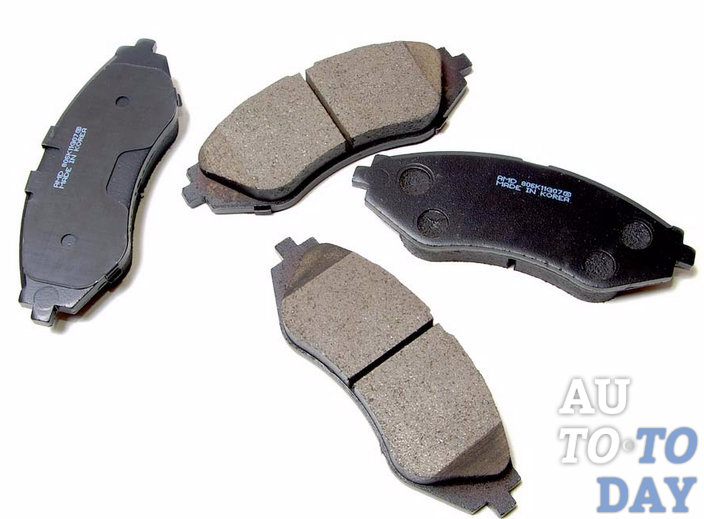
Did you know? Google has created and put into operation self-driving cars. As of the summer of 2015, 20 such cars are already driving on the streets of Mountain View. In the future, these cars will replace taxis.
We looked at why the brake pedal hits when braking. They told you what to do in such a situation, and the breakdown is so dangerous.
Subscribe to our feeds at
No matter how well the active and passive safety of a car is developed, if the brake pedal hits when braking, the car becomes dangerous both for the driver and for other road users. Moreover, the higher the speed, the stronger the pedal vibration usually is, which can become an unpleasant surprise in an emergency. Let's look at why this might happen.
Author of the article: mudriy_lev
Specialization: repair of auto generators and servos in cars.
Place of work: service center. Experience: 2 years.
Education: higher education - electrical engineer, secondary specialized education - mechanical assembly mechanic.
The car vibrates along with the beating of the brake pedal
The situation when a car, when driving or braking, vibrates quite strongly simultaneously with the brake pedal, may be due to the following reasons:
- car wheel imbalance
- damage to the wheel (tire or disc)
- poor wheel fastening
To diagnose wheel imbalance, you need to visit a service station. In garage conditions, despite existing methods, checking balancing is quite labor-intensive, and the result obtained by self-balancing will have a large error.
If the car's wheels are unbalanced, this situation must be corrected. After this, check the behavior of the brake pedal when braking at different speeds. For these purposes, it is better to choose a road without busy traffic.
In order to identify a damaged wheel, it is necessary to visually inspect all 4 wheels. It is advisable to produce this operation in the pit in order to be able to carefully inspect the wheel both from the outside and from the inside. Any swelling or depressions should raise suspicion, and in this case the tire must be repaired or replaced with a new one. The same goes for wheel rims. There should be no damage to them. It is desirable that there are no stuck pieces of dirt on the wheel.
A wobbly brake pedal due to a loose wheel is the most dangerous. When braking, large tearing forces act on the wheel mounts. This can lead to the bolts breaking off and the wheel losing, which can lead to an emergency situation at speed. It is necessary to visually inspect all fasteners more often and, in case of loss of bolts or loosening, take measures to eliminate the current situation.
Wheel alignment
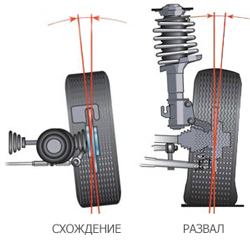
An incorrect wheel alignment angle can also create vibration that transfers from the wheel to the entire car body. When braking, the pedal directly receives a beat that is transmitted to it through the entire braking system.
When diagnosing the reason why the brake pedal hits when braking, factors indicating the need to check the wheel alignment are the following previous events:
- The car was in an accident, after which body repair work was carried out
- the suspension was repaired or, conversely, the suspension was not repaired for a long time
- the car received a blow to the wheels as a result of falling into a hole, quickly overcoming a speed bump, unsuccessful parking and hitting the curb.
Adjusting the wheel alignment angle must be done only on a fully serviceable suspension, the elements of which have not yet fully exhausted their service life.
Front wheel brake system
![]()
In order to determine the culprit of the brake pedal beating, the braking system of the front wheels uses two complementary methods:
- Analysis of steering behavior during braking
- Handbrake braking
If, when braking, the beating is transmitted to the brake pedal and steering wheel at the same time and with the same frequency, then most likely there is a problem with the braking mechanism of the front wheels.
An indirect confirmation of this is the absence of vibration in the steering wheel when braking with the handbrake. In this case, slight vibration can be transmitted to the car body.
The reasons for the pedal beating, in this case, may be:
- wave-like curvature of the brake disc as a result of a sharp temperature change
- uneven rusting of the brake disc
- use of low-quality brake pads
- brake disc chip
- Excessive brake disc wear
- souring of brake cylinders
After a visual inspection of the brake mechanisms, it is necessary to replace the failed elements.
Rear wheel braking system
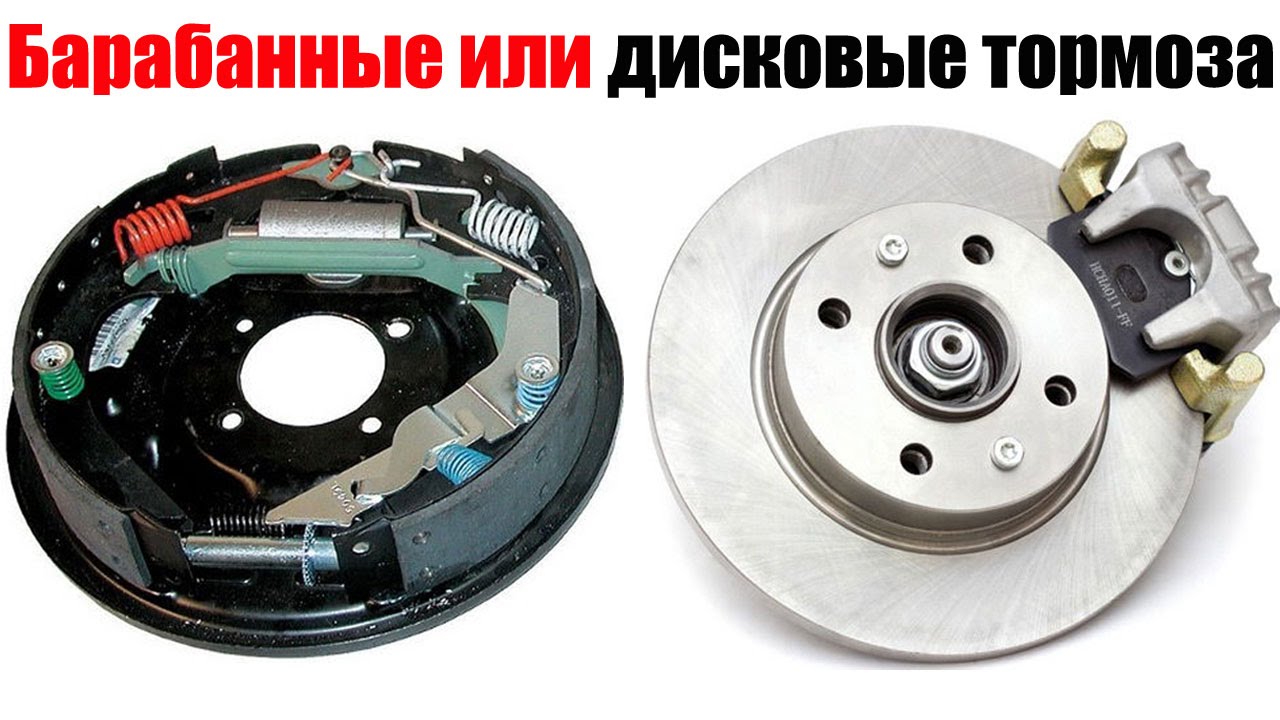
When diagnosing brake pedal beating, attention should be paid to the braking system of the rear wheels if there is no steering wheel beating when braking and vibrations are felt when braking with the hand brake.
There are 2 types of rear brake mechanisms on modern cars:
- drums
- disk
In the case of drums brake mechanisms, the cause of the brake pedal beating is the curvature of the drum when it takes on an elliptical shape. To eliminate this malfunction, it is necessary to replace the damaged elements of the brake system.
In the case of rear wheel disc brakes, the methods for diagnosing and repairing the breakdown are similar to those for front wheel disc brakes.
Brake pedal squeaks after installing new parts
If the brake system has recently been repaired, most possible reasons is:
- poor quality installation
- low quality spare parts
- combination of the above two factors
In this case, the right decision would be to visit another service station.
It is strictly forbidden to drive a car at high speed if the brake pedal hits when braking. And if the vibration is very strong, then it is advisable to call a tow truck and not risk your life.
In any car, the brakes are a key element of its safe operation. If the brake pedal hits when braking, then this is clearly a bad sign, which means the need for a complete inspection of the car.
When pressing the brake pedal is accompanied by its further beating, you should carry out a full technical inspection as soon as possible by contacting a quality car service center, or do it yourself. Generally, the higher the speed, the stronger the runout effect. Very often it is transmitted to the steering wheel and the body itself in the form of an unpleasant vibration, which is difficult not to notice. If it is more characteristic of the body than the brake system itself, then the problem may not be the latter.
One of the most common causes of this problem is broken brake discs, which become so due to damage and bending. This happens simply due to the critical temperature difference that occurs after instantaneous heating and sudden subsequent cooling, which is why the brake disc is subject to deformation. In this case, if the pedal starts to beat, it is necessary to immediately replace both brake discs to avoid emergency situations.
However, even their quality replacement the beating may remain. Most often it is felt in the first five hundred kilometers, and the reason for this is a sudden deterioration technical characteristics the entire system. The solution is the so-called “running in” of the disks, but if this does not help, then a thorough diagnosis can perhaps help determine what the problem actually is. 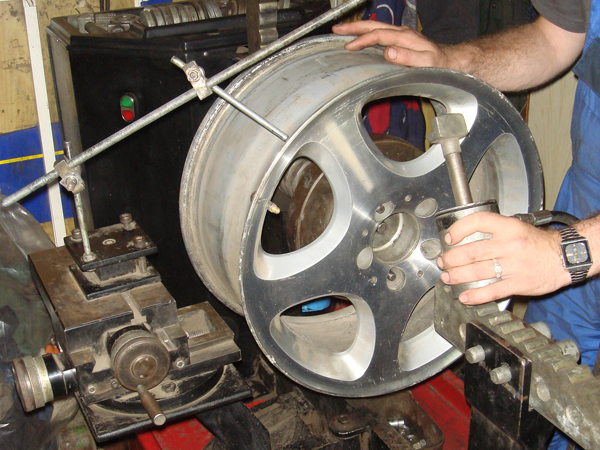
When a brake fails, the brake pads can often be the cause. This problem can also be treated quite simply - you need to replace the pads and the pedal will function normally.
The same problem can appear due to a kind of “sticking” of the rear brake pads. Unfortunately, if you use the brake very often and sharply at high speeds, these pads wear out quite quickly and even crumble. Again, the solution to this situation is their immediate replacement.
The fourth direct cause of a pedal not functioning properly is a severely deformed rear brake drum. It is because of its “neglected” state that the brake system begins to beat during use.
The last most common breakdown is considered to be both rear and front. They very often undergo acidification, which causes the brake to become faulty. IN in this case Replacing them is not necessary, as using WD-40 can solve this problem. 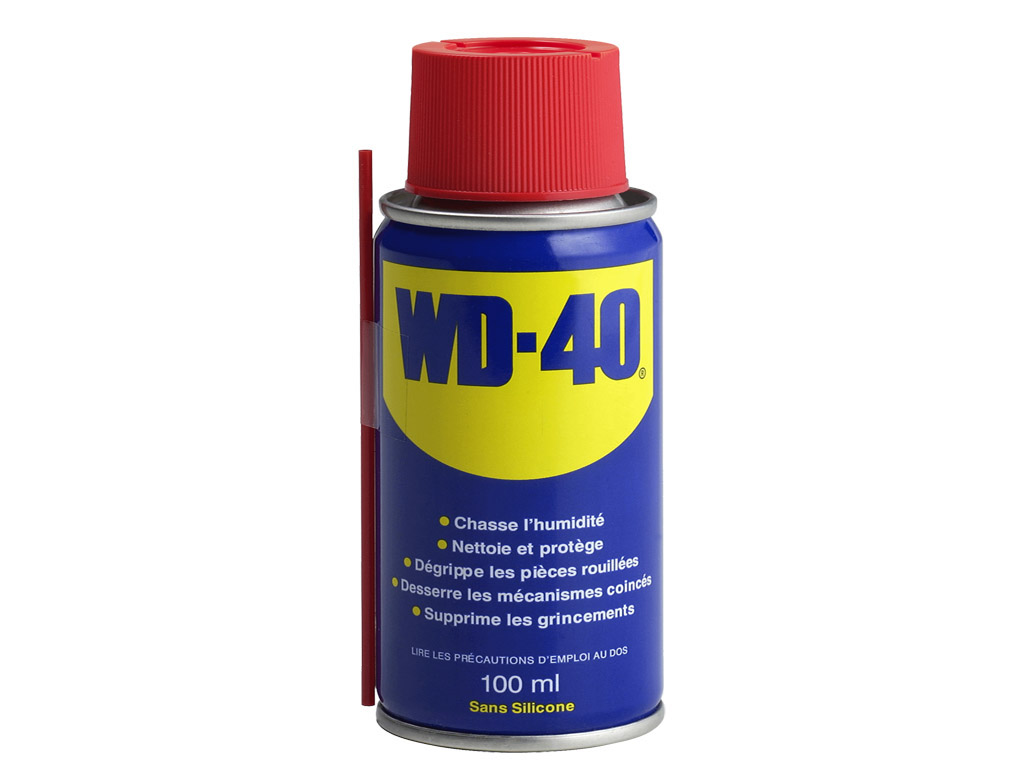 WD-40 is a special water repellent that gets its name because it was developed on the fortieth attempt. This product can prevent corrosion without much difficulty, but if it does not help, then you also cannot do without replacing the cylinders. If the above solutions did not help, then the problem may be a faulty automatic transmission or other parts.
WD-40 is a special water repellent that gets its name because it was developed on the fortieth attempt. This product can prevent corrosion without much difficulty, but if it does not help, then you also cannot do without replacing the cylinders. If the above solutions did not help, then the problem may be a faulty automatic transmission or other parts.
Indirect causes and their elimination
If the brake pedal continues to beat even after all direct faults have been resolved, then the problem may be something else.
Other causes of brake problems include excessive wear of wheel bearings. Replacing them should solve this unpleasant situation. Also, the problem can be fueled by “saber” and “daisy” that are in poor operating condition.
If the wheels are unbalanced, the pedal may also start to beat, but then most of the unpleasant effect is transferred to the car body rather than to the brake system itself. This issue can also be resolved extremely simply - in best case scenario You will need wheel balancing, and in the worst case, they will need to be replaced. Also, trite nuts and bolts that are not fully tightened cause play to occur, which at high speeds imitates a characteristic beat, which is why the driver may believe that it is the brake that is faulty.
However, when the brake pedal begins to pound, it means that it is best to immediately use the services of a trusted auto repair shop. This is due to the fact that there are a huge number of reasons for the occurrence of such a malfunction, and if you do not turn to professionals in time, the brake system can completely fail after thoughtless intervention in its operation.
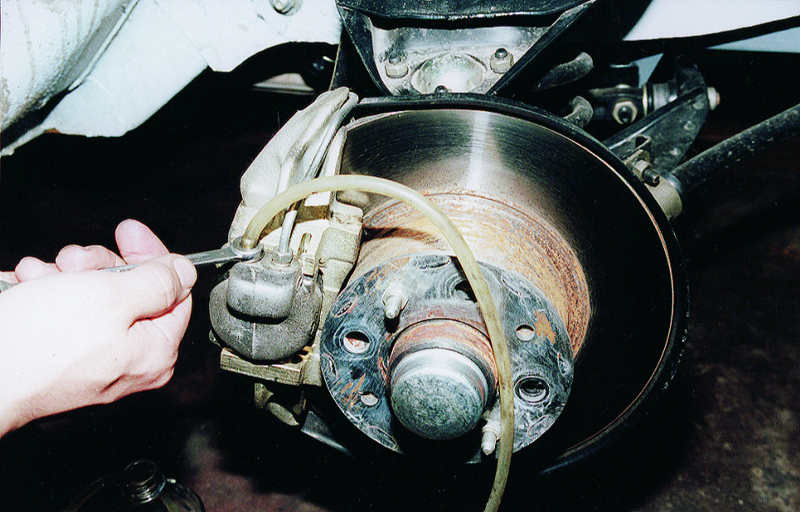 First of all, in order to avoid possible malfunctions, it is necessary to regularly check the presence of brake fluid in the relevant vehicle system, and also replenish its quantity if necessary. The key to long-term operation of any car is proper care of it and compliance with all safety rules. As for the brake system specifically, faults in it are not used to “resolving”, so a serious and responsible approach to solving the current problem is needed.
First of all, in order to avoid possible malfunctions, it is necessary to regularly check the presence of brake fluid in the relevant vehicle system, and also replenish its quantity if necessary. The key to long-term operation of any car is proper care of it and compliance with all safety rules. As for the brake system specifically, faults in it are not used to “resolving”, so a serious and responsible approach to solving the current problem is needed.
Video “Eliminating runout of the brake disc on the motor wheel”
The recording shows how the process of eliminating the runout of the brake disc on the motor wheel occurs.
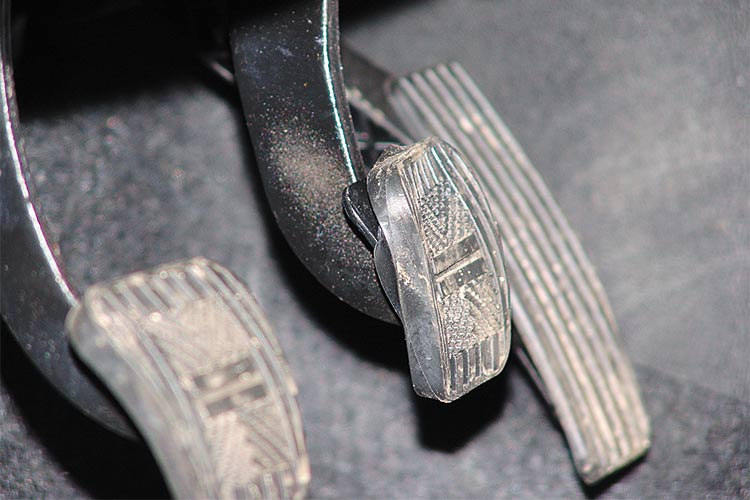 Why does the brake pedal fail and what to do in this case?
Why does the brake pedal fail and what to do in this case?
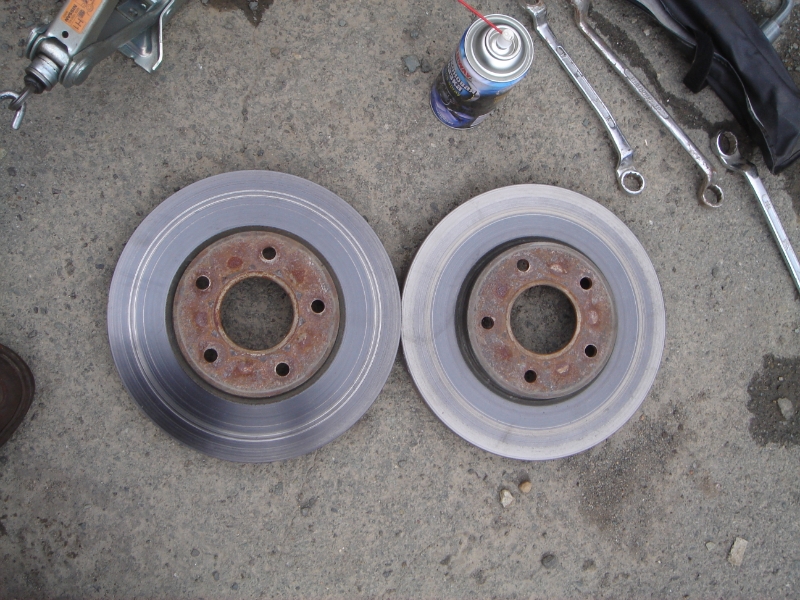
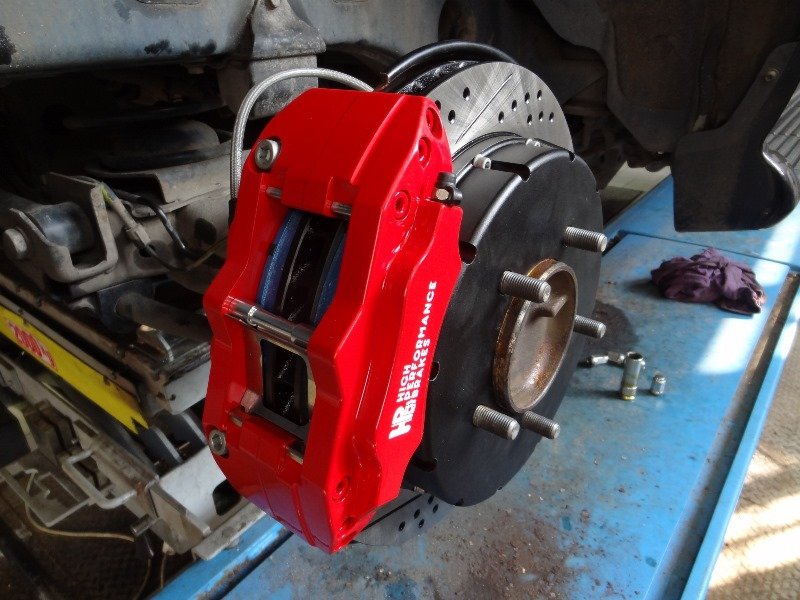
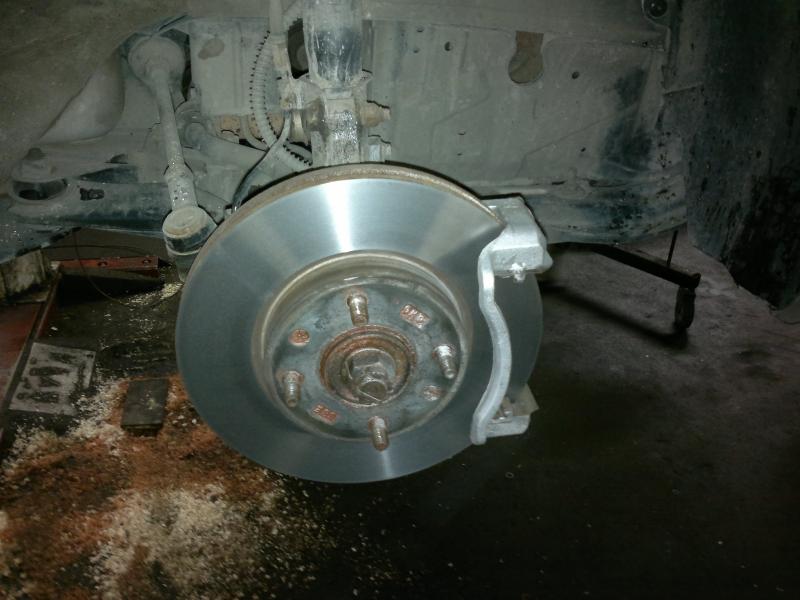
 Chicken kebab marinated with lemons and mineral water
Chicken kebab marinated with lemons and mineral water Step-by-step recipe for making Mediterranean seafood soup
Step-by-step recipe for making Mediterranean seafood soup Pear compote without sterilization for the winter Pear compote is very tasty
Pear compote without sterilization for the winter Pear compote is very tasty